Citroen e-Relay van review (2023)
The big electric Citroen has some oddities, and not in a charming way
PROS
- Can do up to 154 miles on a charge
- Keeps the Relay’s big loading bay
- Choice of body sizes
- More than one battery option
- Smooth and quiet on the move
CONS
- Payload impacted by battery conversion
- Strange driver interface
- Not much safety kit as standard
- Poor performance
- Slow to drive
Summary
The Citroen e-Relay completes a set for the brand – it means there is an electric van version of each model in its range. As well as the e-Relay you can also buy an e-Dispatch and an e-Berlingo.
However, don’t make the mistake of thinking that they are simply different size versions of the same van – the e-Relay is cut from a very different cloth to the other two. While the Berlingo and Dispatch come out of the factory as electric vehicles, the e-Relay has to head off to be converted by a third-party company.
With other big electric vans offering more in terms of range and useability, the e-Relay faces a tough challenge. It isn’t totally worth writing off, but it is going to appeal to a small and limited group of users.
What has been done to the e-Relay to make it an electric van?
The Citroen e-Relay heads out of the factory to conversion specialists BEDEO, who have plenty of experience in creating electric vehicles.
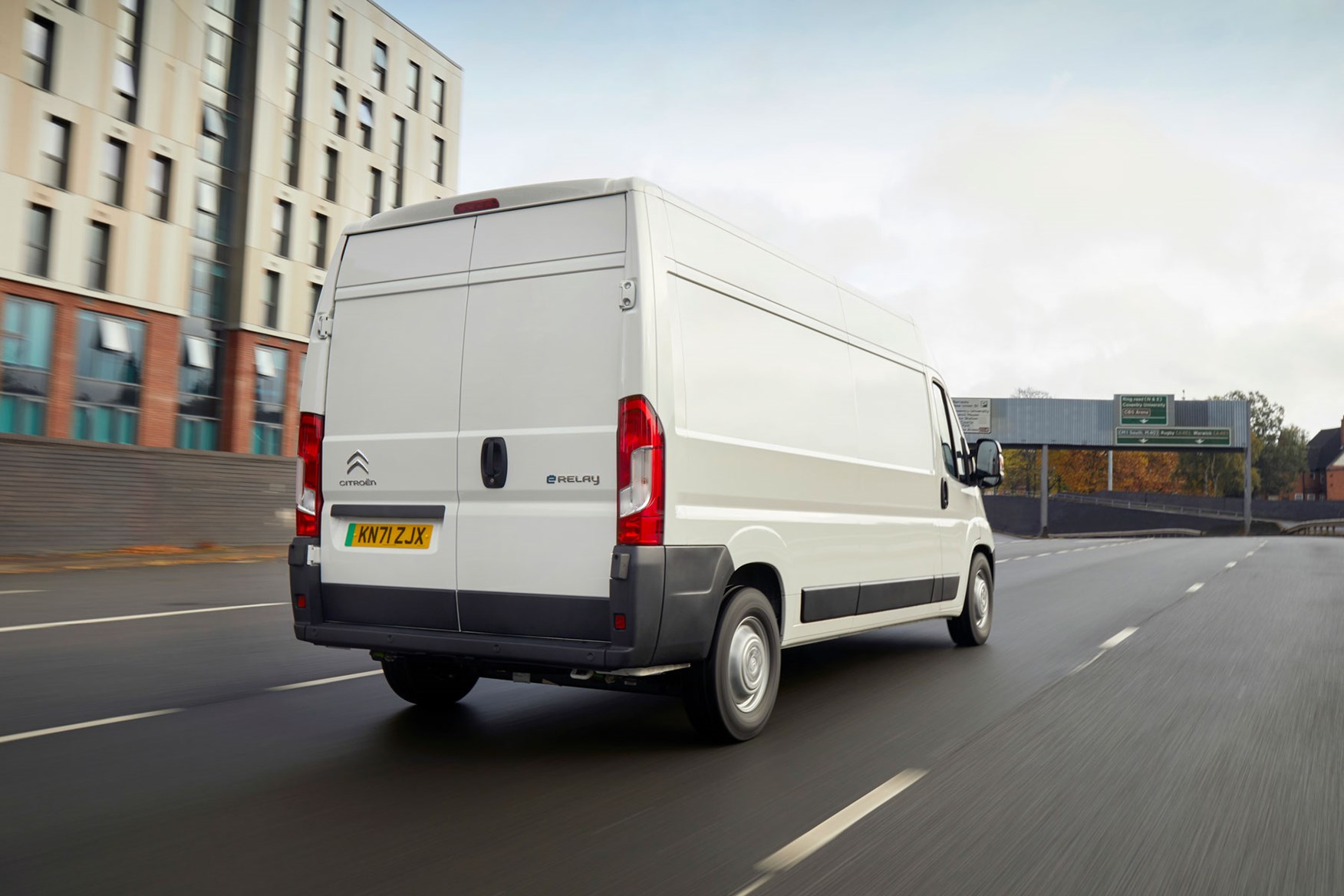
The e-Relay gets a good choice of battery and model sizes. There are three lengths to choose from, although only the one height, and a chassis cab and a window van. There is a pair of batteries available, although only the smallest L2H2 model gets the 37kWh battery – the rest get a 75kWh version. If you are looking at a very early model then it’s worth bearing in mind that the very early versions had a 70kWh battery, with marginally less range and a slower charging time.
Regardless of how big a battery you go for, it won’t impact the loading space as they sit under the floor and don’t encroach on practicality.
It is in the cabin where things start to get a bit funky. There is no gear lever – it is replaced by a selection of buttons, and a rear-view mirror that doubles up as a screen with the range info on show.
Charging and electric range
The smaller battery is only really suitable for those who know they are sticking to shorter trips – it offers a maximum range of just 73 miles. The bigger 75kWh battery manages a much better 154 miles per charge (the short-lived 70kWh battery promised 139 miles). All these claims are the official WLTP ones, so don’t expect to still get the maximum promised distance if you’re lugging a full loading bay in the depths of winter.
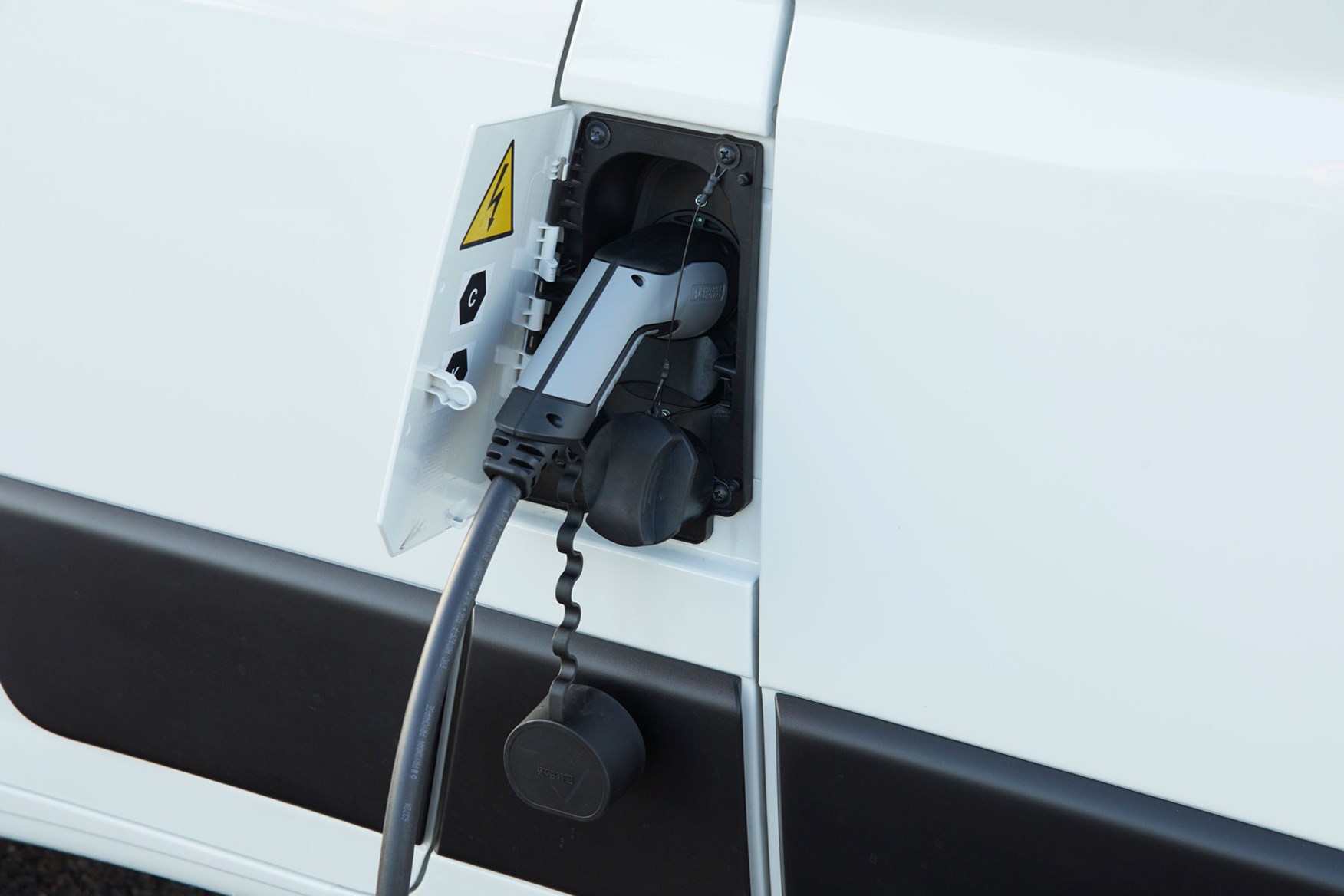
If you plug into a home or workplace charger, typically a 7.4kW unit, then it’ll take six hours to rejuice the 37kWh battery and 12 to replenish the 75kWh. If you have a 22kW charger then you can also use one of them, where there is a three-phase power supply, while the e-Relay is also compatible with 50kW fast chargers, where they are available – they will get you from 0-80% in just an hour.
What body shapes does the Citroen e-Relay come in?
There is a decent but not ground-breaking amount of choice when it comes to the e-Relay’s body styles – it comes with three lengths and only one height option. They are labelled L2, L3 and L4.
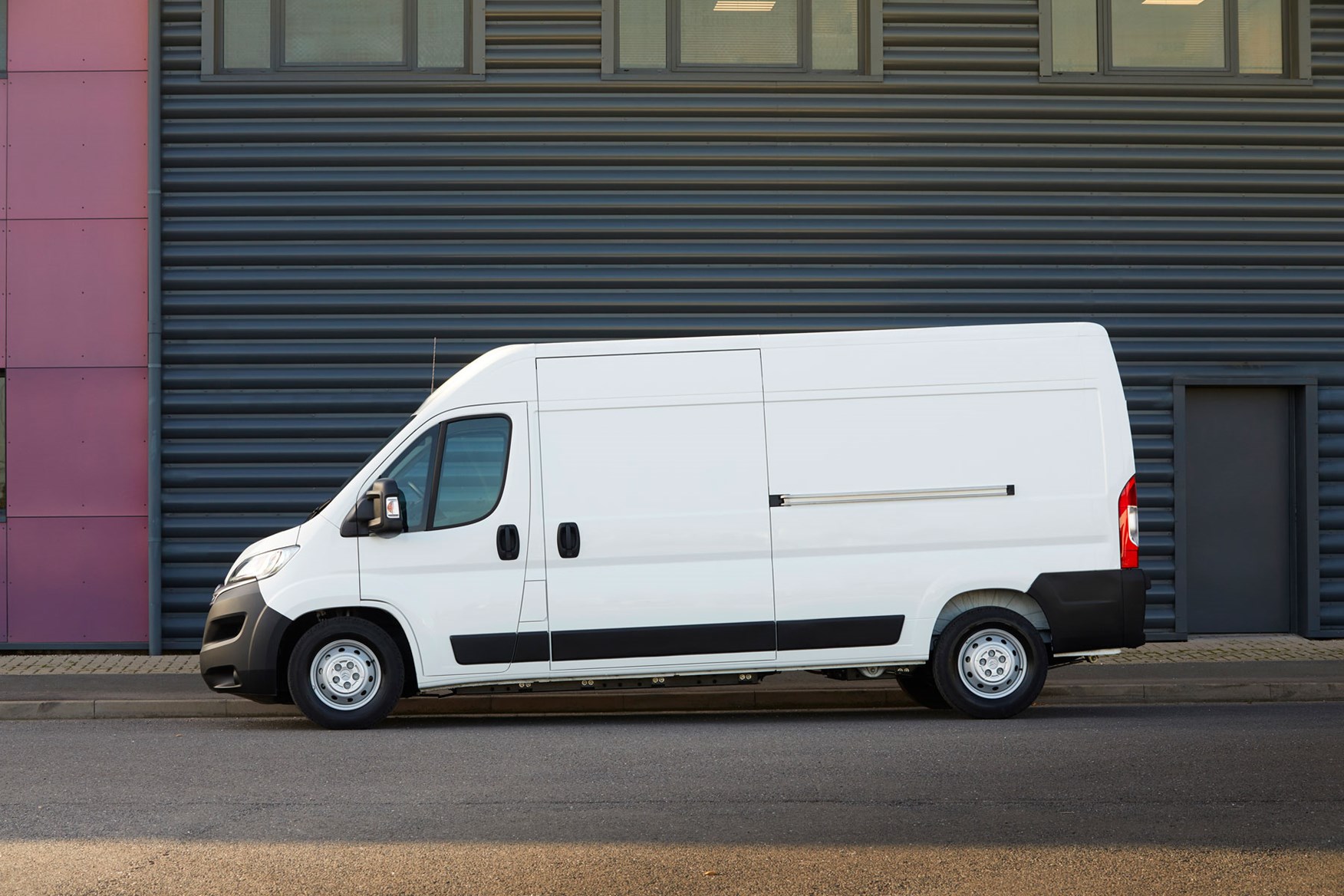
There is also a chassis cab and a window van, combining load space with extra seating.
You can find more information on the dimensions on our dedicated page.
What are the Citroen e-Relay’s rivals?
The e-Relay’s most obvious and most closely related rivals are the Peugeot e-Boxer and the Vauxhall Movano-e – they are essentially the same van but with different badging, coming out of the same factory and converted by the same company.
The Fiat E-Ducato is similar but different as the body structure is the same but the electrification is done elsewhere. This means it can go further, has bigger batteries and also has higher payloads thanks to a version with a bigger gross-vehicle weight.
The Renault Master E-Tech is another option where the manufacturer has taken a long-established vehicle and installed electric technology – it has just the one battery, though. The Mercedes-Benz eSprinter is a newer van and was created with electric in mind from the outset, but it still doesn’t have a great driving range and you can only get one size and shape in the UK.
Ahead of the rest of the pack sits the Ford E-Transit. It sits in front of the rest in terms of range, price and overall driving experience and it makes it hard to make a case for going for any of the rivals.
Verdict: is the Citroen e-Relay any good?
The Citroen e-Relay isn’t awful but there is a real sense that you could do better. It fulfils the brief of allowing Citroen to offer an electric version of all of its models, but it doesn’t give you the feeling of quality and performance that you would hope for given the money involved.
If you are really struggling to get one of the better options in the class then it shouldn’t let you down, but there are definitely more competent rivals out there.
Skip to our full verdict on...
- Performance is restricted
- Not as much regen braking as could be hoped for
- Quiet and smooth on the road though
The e-Relay does some of the things that electric vehicles are famed for very well but sadly lacks some of the other positive attributes. It doesn’t, for example, have that strong surge of acceleration that you can get from an EV. In some senses this is ok, as it means your load-bay contents won’t be thrown around, but it does mean that there is no zipping away from a standstill around town.
It’s not as if you can put it into a different driving mode to increase or deaden the power or speed on offer – there is just the one fairly sedate mode. This means no power mode to get a bit more of an overtaking boost and no Eco mode to deaden things down and improve your range to eke more miles out of it.
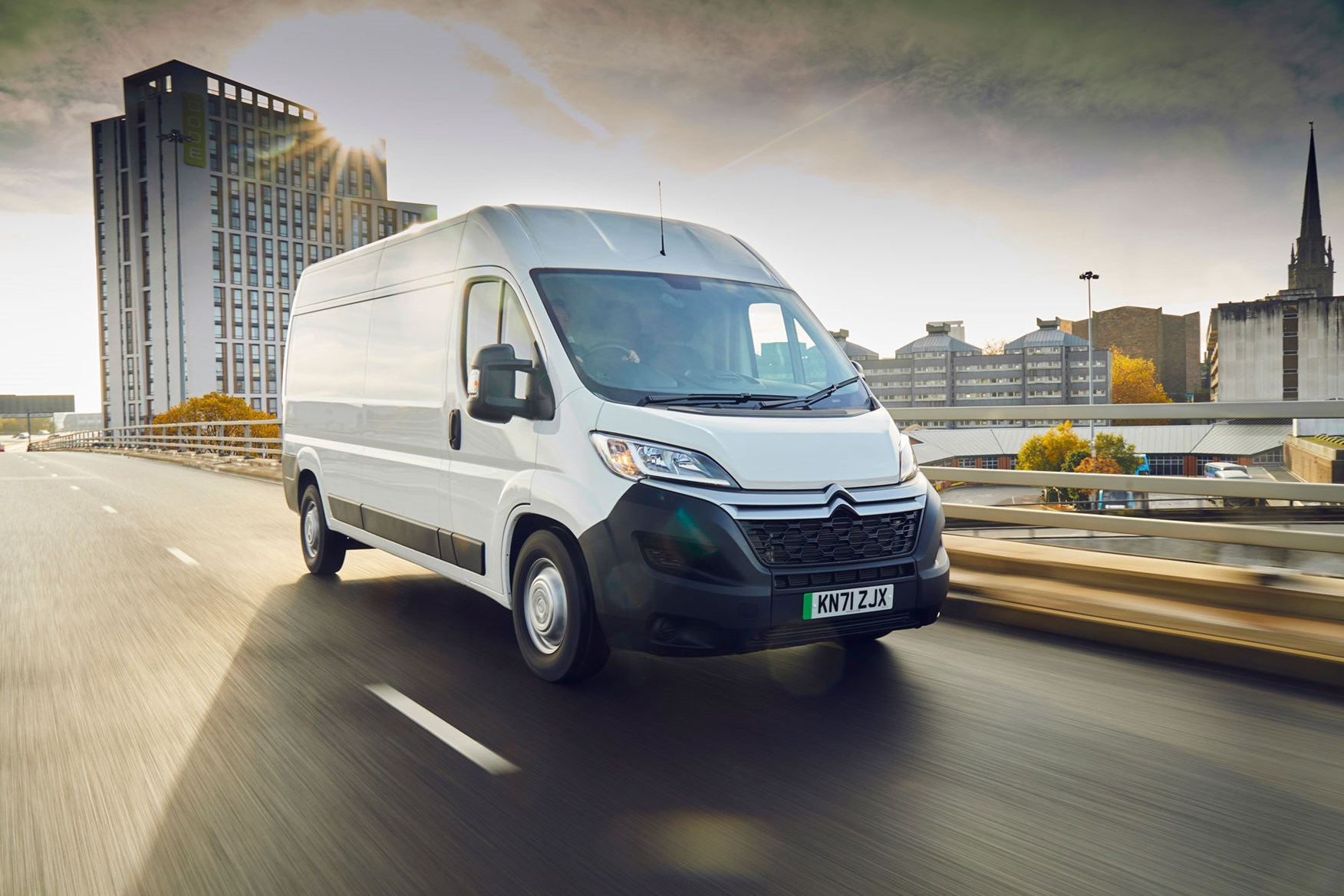
The result is a van that is slow to accelerate and not that swift to scrub speed off when you use the regenerative braking. There is no B mode either, so you can’t up the levels of resistance to get more energy back into the battery. It means you will have to use the brakes more, which might over time result in you getting through more pads and discs.
Citroen e-Relay Power and performance
The power stats for the e-Relay do at least forewarn you for what you should expect. It is only a 90kW motor, which is the equivalent of 122hp, which is itself not far off the entry-level diesel. The pulling power is down on the diesel, though, at just 260Nm versus 310Nm for the diesel.
This means that you might find yourself struggling if you want to regularly max out the payload, particularly if your route involves a few hills.
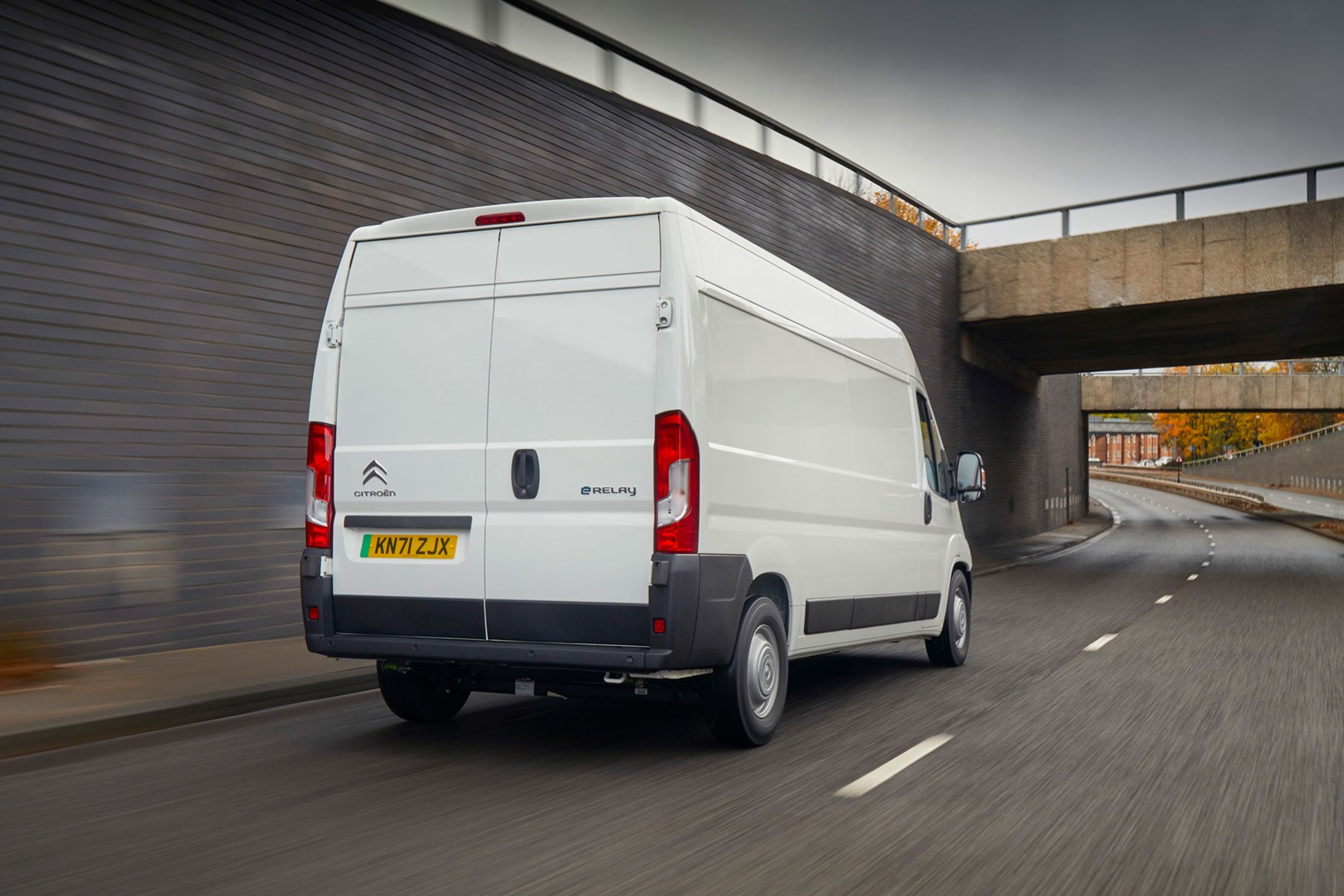
The lack of pace also extends to the top speed, which is restricted to 68mph for the 3,500kg gross vehicle weight models. You can get a 4,000kg GVW which is even slower at 56mph.
Keeping it at a motorway-suitable speed is made trickier by the lack of cruise control. The e-Relay can bounce around a little at higher speeds so it is a challenge to keep your foot steady on the pedal. More proof this is a van best used around town.
Citroen e-Relay steering and suspension
There is always a degree of suspension firmness that is needed to carry a big payload and the e-Relay is no exception to this. It means that there is a bit of jolting and bumping, particularly at higher speeds, but it isn’t too intrusive and it will settle down with more weight in the back of the van.
The steering doesn’t have any assistance systems that help keep you in your lane or similar, which means that it is a more old-fashioned setup with a little more resistance than some modern equivalents. This means it is quite heavy at low speeds, but it gets easier the faster you go.
- Old-fashioned and poor seating position
- Bizarre defunct instrument panel
- Looks like a patchwork solution
The conversion doesn’t cover up any of the e-Relay’s age-related issues – in fact it magnifies them.
To start with the good stuff, there is a good amount of storage all around, with little spaces dotted around. There are no clever solutions as you find in newer vans, though. There is only the one cupholder for example. The materials are fairly old-school and utilitarian but they should be hardwearing.
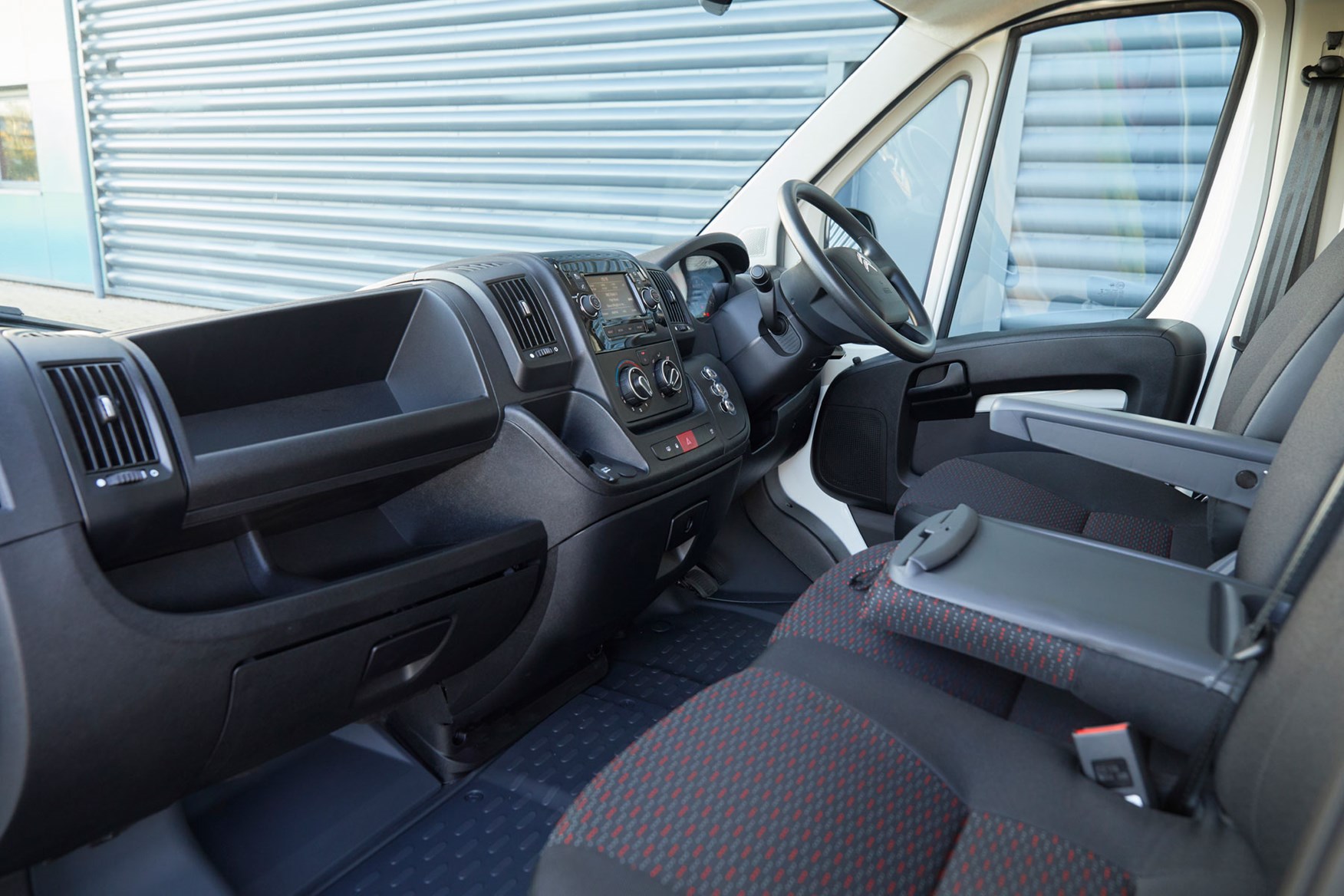
There is a good amount of room for three adults in the cabin, with even the middle passenger getting a decent amount of leg space.
The driving position is hampered by the old-fashioned approach, as the seat is hard and the steering wheel is slanted away from you – it feels like you are driving an old bus and it is hard to get and stay comfy.
Display oddities
But the biggest oddities are brought about by the conversion job done by BEDEO. The instrument cluster is exactly as it would be in a conventional diesel van, with the same speedometer, rev counter, and temperature and fuel gauges. Of these, only the speedo has any purpose – none of the rest even have needles, so they just sit there reminding you of the sort of information you could have had at your fingertips in something that was designed with electric in mind at the start.
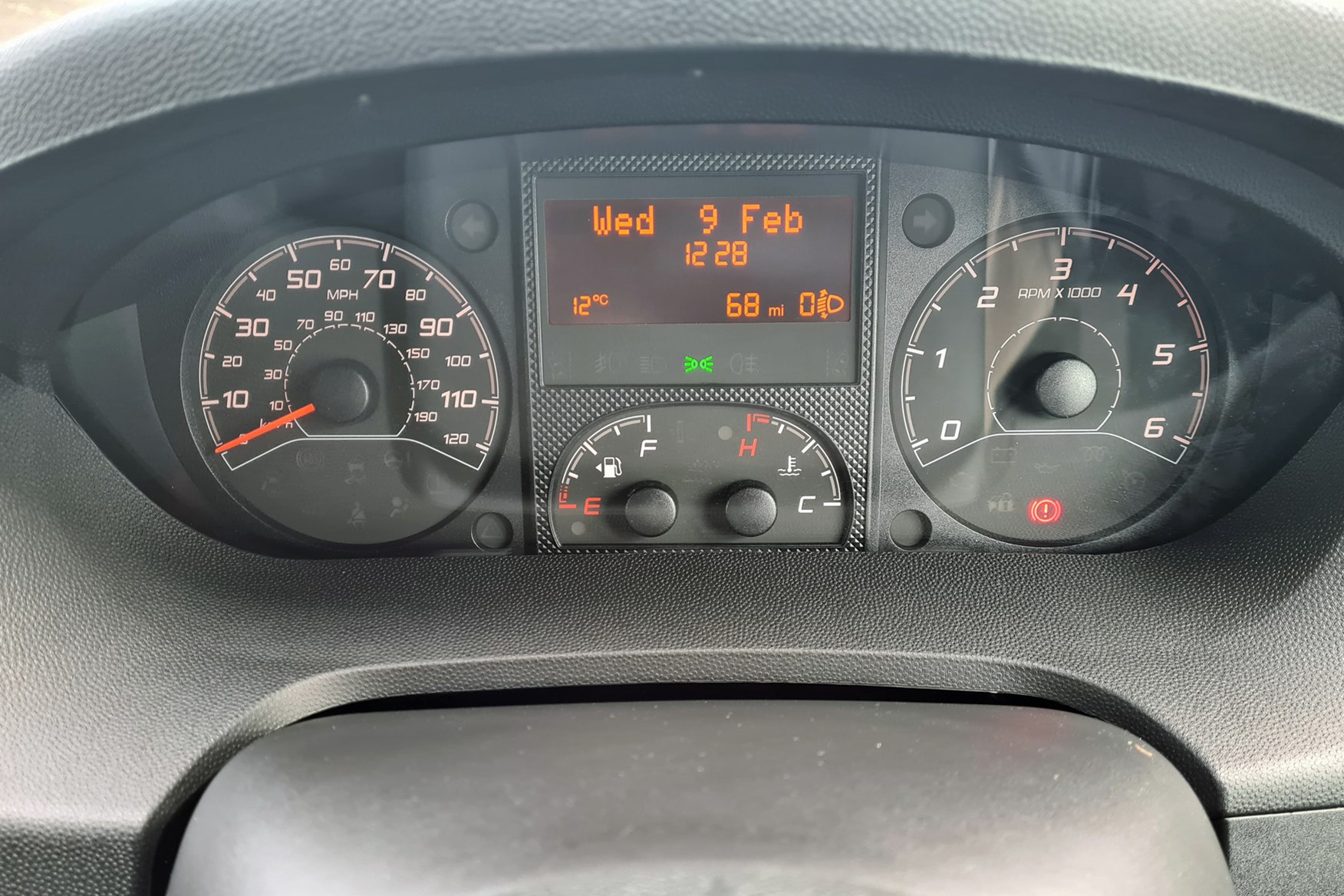
Instead, all the information on range and battery charge status is shown in a digital display that is on the rear-view mirror. Oddly it is only in one small section of the mirror. Given the vast majority of e-Relays are panel vans with a solid bulkhead the mirror element isn’t necessary, so it could have been replaced by a dedicated display. It sits slightly out of the natural eyeline, but it is easily seen and it is at least in a place that most drivers will be used to looking at.
Buttons added in
The other oddities are the gear selection buttons and heating controls. The gears are chosen by a trio of clearly labelled buttons that sit to the left of the steering wheel and are simple to use. The heating controls are more confusing and might need explaining to anyone jumping into the e-Relay for the first time.
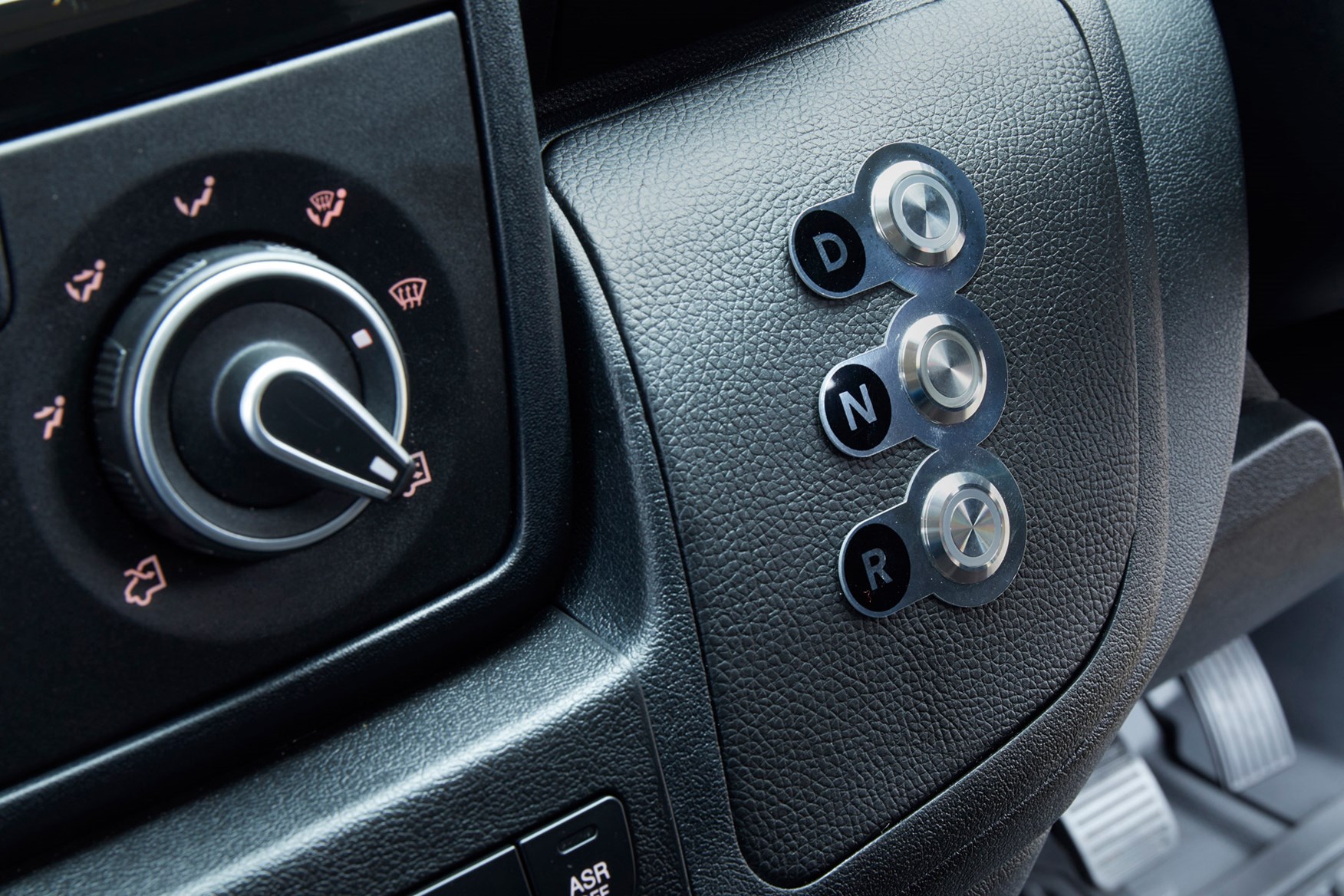
The temperature is controlled by a digital panel that sits to the right of the wheel, a long way from the traditional location in the centre of the dashboard. However, the fan speed is still controlled by the dial on the dash. Confusing to say the least.
- Cheaper to run than diesel
- But not to buy in the first place
- Not much choice of trims
Energy prices might be rising, but so are diesel costs and, at the moment, it will still cost you less to run an electric Relay than a diesel one on a per-mile basis.
You will have to shell out considerably more to buy an electric Relay – the step up will cost you around £18,000 to £20,000 more than a similar diesel model. The gaps were closed slightly with the introduction of the 75kWh model as it is more economical to manufacturer than the 70kWh model, but this is only on the heavier versions and the lighter models remain unchanged.
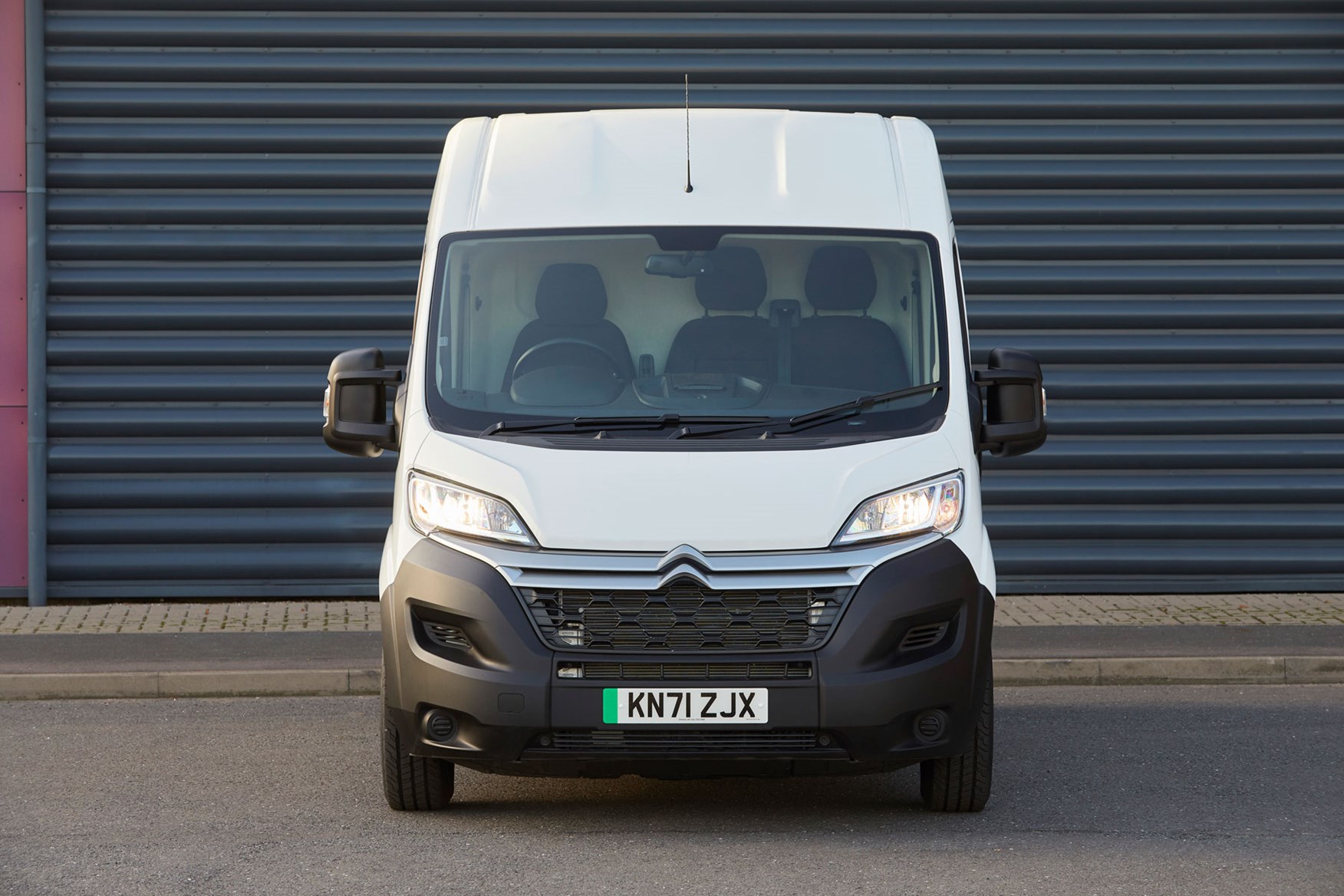
However, expect to get a much more competitive and comparable deal if you pay on a monthly basis.
Running costs should be more palatable than a diesel model, too, due to exemptions to low-emission zone charges and servicing costs that should be lower. However, the low level of brake regeneration might mean that you won’t get more life out of the brake pads as you do sometimes on an electric vehicle.
Citroen e-Relay standard equipment
The Citroen e-Relay comes in Enterprise Edition trim and offers the following equipment as standard:
- Air conditioning
- Cruise control with speed limiter
- Heated, powered windows
- Seven-inch colour touchscreen with satellite navigation
- Apple Carplay and Android Auto
- DAB digital radio, Bluetooth and USB connection
- Steering-wheel mounted controls
- Telematics box
Citroen e-Relay warranty
The Citroen e-Relay comes with the standard Citroen three-year/100,000-mile warranty but the battery gets an eight-year/100,000-mile warranty. If Citroen installs your charging point then you get a five-year warranty on that, too.
There hasn’t been enough time or examples of the Citroen e-Relay sold yet to comment on long-term reliability. A conversion doesn’t go through the same factory-only process as a standard van but, that said, the Relay has been around for a long time and BEDEO has lots of experience of electric conversions. This suggests there shouldn’t be great cause for concern.
If you own one and want to tell us what it is like then do let us know at the Parkers feedback email address.
- Not much in the way of safety kit
Safety is a disappointing element of the e-Relay as there really isn’t much in the way of standard kit beyond the bare minimum. There is a driver airbag, emergency brake assist and electronic brake force distribution.
You can add some more safety kit should you wish, though, with a Safety Pack including speed limit recognition, smart beam headlights, active safety brake, collision alert and lane departure warning. It's disappointing that a passenger airbag is a £300 addition.
Which Citroën Relay e-Relay is best for me?
The relatively simple layout of the e-Relay range makes choosing which one to go for relatively simple. With just the one trim on offer, which is the mid-level Enterprise, so it comes down to just picking which body shape you want and whether you go for the bigger battery or not. If you want the smallest version then you are stuck with the smallest battery and therefore the shortest range.
Going for the bigger battery requires going for one of the two longer models, and requires a step up in investment, as the price goes up by just under £6,000 (before VAT).
The pick is arguably the 35 Heavy L3H2 with the 75kWh battery. If you want the bigger payload then you need to go for the 40 version, which can be driven on a normal licence but requires more driver training for anyone wanting to get behind the wheel.










